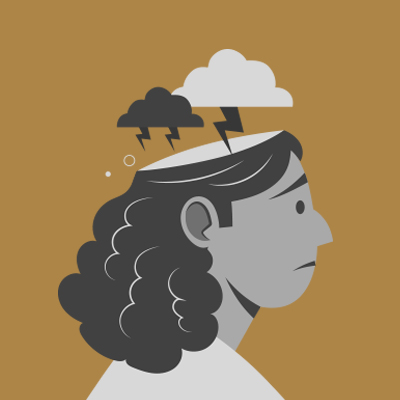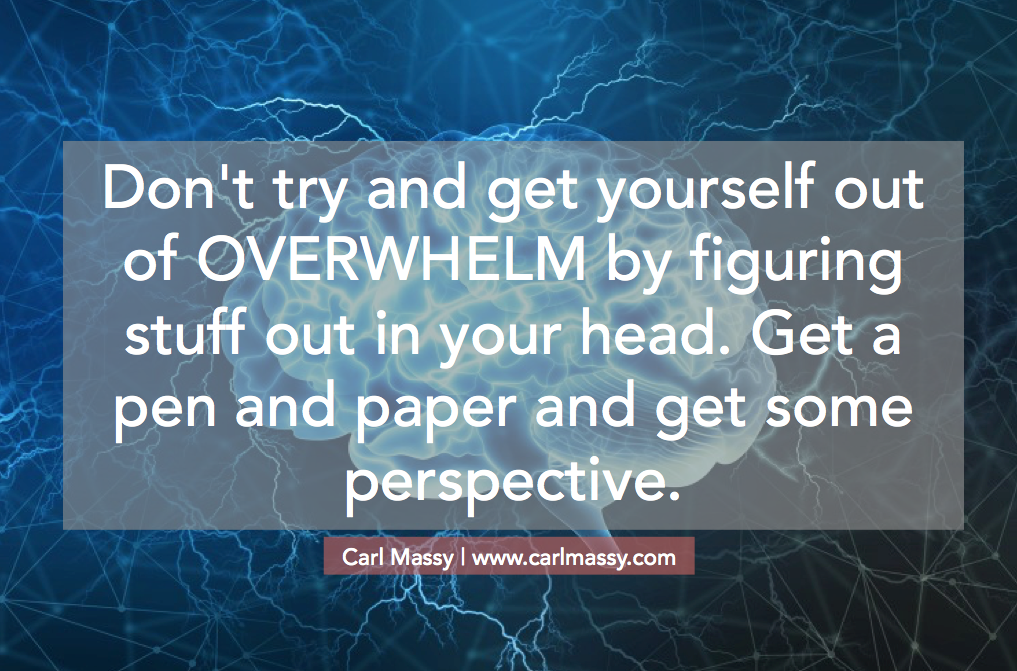
Hands up if you experience overwhelm occasionally (or a lot).
Hands up if you are human.
Chances are that if you are human you have experienced, do experience, or are currently experiencing, overwhelm.
We have all been there and done that.
So what I want to focus on today, is how to move through, and beyond, overwhelm as ease-fully as possible.
I often work with clients to take them beyond overwhelm into the ‘now I have got this sh#t figured out‘ realm.
My suggested strategy is also inspired by a great book I was recommended (thanks Tom!) called ‘The Master And His Emissary‘ by Iain McGilchrist. It is looking at the similarities and differences between the brain hemispheres, given they are actually asymmetrical.
Fascinating stuff.
But now let’s make it practical.
The most common thing
I have a diagram further down to highlight this more clearly.
But the point is simple.
Most often we experience the emotional ‘feeling’ of overwhelm, because we feel like our head is totally FULL and it’s likely to explode or implode at any moment.
We are completely befuddled in our mind, and couldn’t figure our way out of a room with a single bright red door with the words ‘Exit’ above it.
We are in the fog of war in our own heads.
And we are trying to figure out how to deal with, or overcome the overwhelm, within the fog.
That is not the environment where you want to set up your workbench.
Too messy. Too cluttered. Too confusing.
So…what to do?
Here is what I recommend
Take a blank piece of paper, and write in the middle of the page:
“The things that are making me feel overwhelmed are…”
Draw a circle around it.
Then draw a line from that statement and write the first thing that comes to mind, which is causing you to feel overwhelmed.
Stay pretty general. Don’t get in the weeds at this stage.
Then draw a line and write another thing that is making you feel overwhelmed.
Do it until you have emptied your mind.
You are likely to find a handful of things on the paper, as opposed to the 27,000 things it felt like when they were bouncing around in your mind.
The fact is you can only hold so many things in your working brain, before it becomes overwhelmed.
Use your left brain, which likes to compartmentalize, isolate, and categorize the ‘things’ going on in your life.
(Later you will use your right brain (most likely) to come up with creative solutions).
Once you have your handful of things that are causing you to feel overwhelmed, ask these questions of each ‘thing’.
- Is this thing Essential or Desirable?
- What are the potential consequences of not dealing with this well?
- Does this thing need to be dealt with now, or can I deal with it later (next day, week, month or year)?
- Can I delegate (or handball) any of these things to someone else?
- Can I get more qualified help to solve any of these things?
- Are there some key unknown variables that is making this thing stressful?
By asking these questions, and seeing them on paper, and not bouncing them around in your brain (which is like a ping-pong game between the back and front, left and right, and upper and lower parts of your brain) you get to PRIORITIZE which of these things need attention now, and which can be dealt with later.
You also separate them into their component parts, so there is less entanglement and confusion.
Once you have separated them, prioritized them, and got clear about what they are (and are not), then you can bring your right upper brain into play, to come up with solutions which take in the broader context of the thing, your relationship to it, and the bigger picture.
This is much more easeful and likely to wield better SOLUTIONS.
My main point, and takeaway
Don’t try and get yourself out of OVERWHELM by figuring stuff out in your head.
Get it out of your head and down on paper.
Ask great questions.
Get perspective.
Then get creative.

My Parting words
It is great to better understand the brain and how best to use it.
The left is great for categorization and sorting.
The right is great for figuring stuff out in the broader context of life.
And sometimes if we try to figure stuff out ‘in our heads’ we kick off a game of ping-pong that leads to even more confusion, loss of perspective, and ultimately overwhelm.
Go pen and paper.
It’s ‘old school’ but it works pretty damn well.
Test it out and let me know how you go.
See if it takes the feeling of 1000 things in your head, down to a realistic handful.
Which I know you can handle.
That’s all for this week.
Have a clear-minded day and an expansive-minded week.
See you next week.
Take care,
Carl

